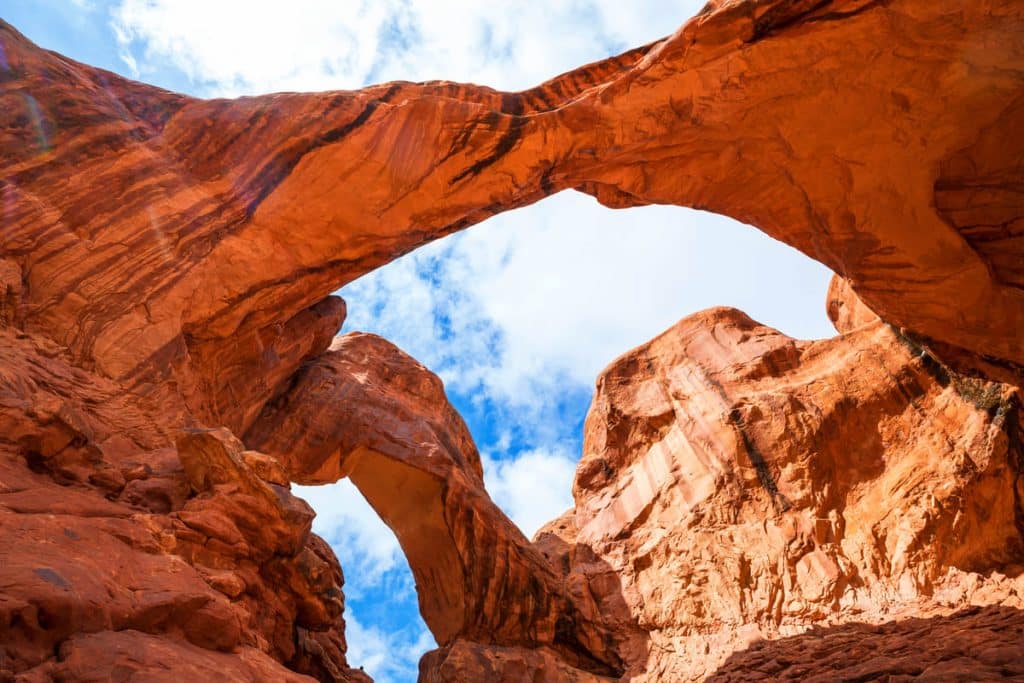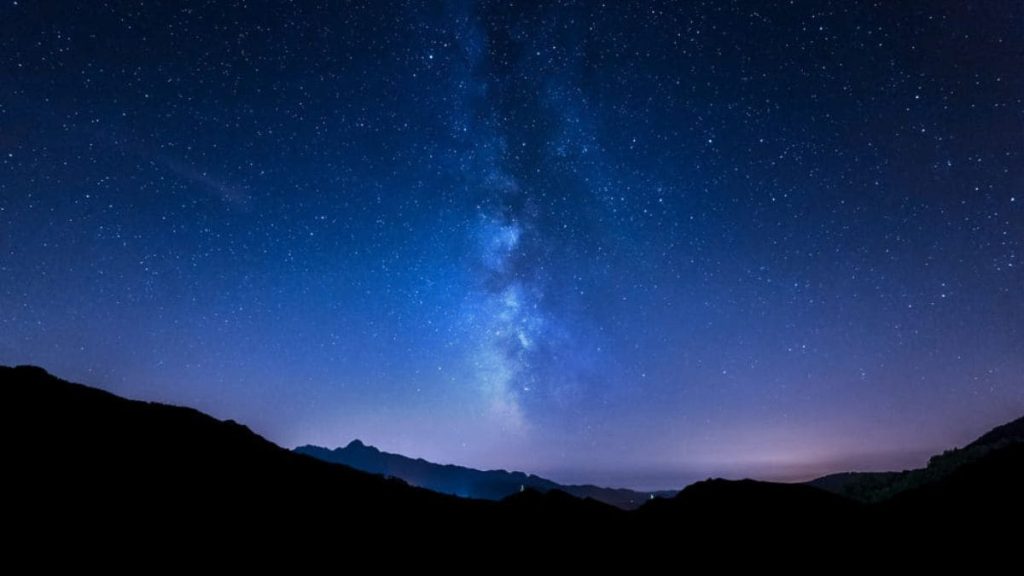Arches National Park in March, is renowned for its stunning landscapes, becomes a haven for nature enthusiasts and adventure seekers during early spring. As the park entrance welcomes new visitors, the transformation of the park under the unique arches weather is a spectacle to behold. This period, often coinciding with spring break, offers an ideal opportunity for exploring the natural wonders of the park.
Key Takeaways:
- March is an ideal time to visit Arches National Park, a popular destination in Southeastern Utah.
- Prepare and be ready for daytime temperatures and potential road closures during this time around these national parks.
- Don’t miss the park’s cooler temperatures, iconic landmarks, scenic drives, and stargazing opportunities.
Arches National Park in March
Best Time to Visit
Visiting Arches National Park in March located near Salt Lake City can be a great decision as the weather starts warming up, making hiking, biking, and sightseeing comfortable. The average high temperature in Moab, the host city of Arches National Park, is 60 degrees Fahrenheit (17°C) during this time.
If you want to avoid the crowds, visit Aches National Park during the first two weeks of March. Make sure to enter the park early, before 7:00 am, leave when it gets crowded, and then return in the afternoon.
Operating Hours
When planning your visit to these national parks, knowing the park’s operating hours is essential. Arches National Park is open 24 hours a day, 7 days a week throughout the year. However, seasonal changes and different hours may affect the visitor center, so checking their website for the most up-to-date information is the best course of action.
Fees and Passes
Arches National Park requires an entrance fee for visitors. The different options for passes are:
- Private Vehicle: $30 (valid for 7 days)
- Motorcycle: $25 (valid for 7 days)
- Individual Entry (biking, walking, etc.): $15 (valid for 7 days)
- Arches Annual Pass: $55 (valid for 1 year)
While at the park, remember that traffic congestion can be a problem between March and October. So, bring your patience and consider visiting nearby attractions or planning your trip during slower seasons.
If you’re interested in camping or RVing, plan ahead because Arches National Park limits camping options, especially during peak seasons. The park features the Devils Garden Campground with 50 individual sites. Yet, it’s highly recommended to make reservations and consult a park ranger, since the spots fill quickly. Several private campgrounds and RV parks are also available in the nearby town of Moab, providing alternatives for a comfortable stay.
KinVibes Pro-Tip: Please note that various reasons might currently prevent the offering of ranger programs. So, it’s a good idea to consider downloading an audio tour app, like GuideAlong, on your phone. This app doesn’t need cell or wifi service to function.
Hiking and Adventure

Popular Trails
Delicate Arch
During March spring break, the daytime temperatures in Moab is around 60°F, making it great for hiking and outdoor adventures. Delicate Arch is one of the most iconic hikes in the park. The 3-mile round trip trail takes you up to an elevation gain of 480 feet, offering stunning arch views.
Devil’s Garden Primitive Trail
Another great option when you visit Arches National Park is the Devil’s Garden Primitive Trail alongside Southeastern Utah. Check out the Sand Dune Arch, Broken Arch, and Tapestry Arch on your excursion. At about 7.2 miles long, this hike provides a bit more of a challenge than the easy 0.4-mile journey to Skyline Arch, which features a 71-foot span and stands at 33.5 feet tall.
Backcountry Excursions
For the more adventurous, Arches National Park offers some backcountry escapades beyond the beaten paths. Before you embark on any backcountry expedition, get a permit, check the weather forecast, and follow the park guidelines. Research your desired route beforehand to ensure it’s within your skill level.
Safety Tips
When hiking in Arches National Park, remember these essential safety tips to enjoy hiking adventure:
- Stay on designated trails: Follow a walking distance marked cairns and pathways.
- Dress appropriately: Wear layers, and sturdy boots, and protect yourself from the sun.
- Bring plenty of water: Stay hydrated, especially since the high-altitude desert environment can only offer very little shade.
- Check the weather: Although the weather in March is typically mild, prepare for sudden changes in temperature and possible rain or snow.
- Observe proper camping protocol: Camp only in designated campgrounds, such as the Devils Garden Campground, and follow the Leave No Trace principles.
Arches National Park in March
Famous Arches
Arches National Park is home to thousands of natural sandstone arches, including iconic must-sees like the following:
- Landscape Arch
- Turret Arch
- Delicate Arch
Visiting in spring break contrasts the brilliant red rock and the lingering snow on the ground. At this time of year, the park experiences mild temperatures, making it easy to enjoy the tranquil hikes to these famous arches.
Geological Formations
In addition to the park’s namesake arches, you’ll find other fascinating geological formations. Perhaps one of the most recognizable is Balanced Rock, a massive boulder perched on a relatively slender pedestal.
Another noteworthy geological formation is the park’s sandstone hoodoos. The unique erosion processes that have taken place there result in these columns of sandstone topped by thicker, harder stone.
KinVibes Pro-Tip: Keep an eye out for the park’s many other formations, like fins, spires, and pinnacles, all of which emphasize the park’s diverse geology.
Wildlife Spotting
As an explorer in Arches National Park, you’ll also have the opportunity to discover the region’s local fauna. Here’s a list of some species you might encounter during your visit:
- Desert Bighorn Sheep
- Mule Deer
- Coyotes
- Foxes
- Several species of birds and reptiles
In March, the park experiences a rebirth as flowers bloom and new signs of spring emerge. This provides the perfect setting to visit Arches National Park. Although some animals may still be less active in March due to the colder temperatures, you still have a chance to glimpse the unique ecosystem the park offers.
Photography and Stargazing

Photo Spots
For photographers, visiting Arches National Park in March is ideal, as it presents an opportunity to capture the park’s stunning beauty. It highlights pleasant temperatures averaging around 60 degrees Fahrenheit during the day. In addition, the park has numerous photo spots, with a 43-mile scenic drive that includes several stops perfect for taking stunning photographs.
Here are a few popular photo spots to consider when you visit Arches Park:
- Delicate Arch
- Panorama Point
- Double Arch
- Balanced Rock
Remember to dress in layers and be prepared for colder temperatures in the mornings and evenings, which can dip into the mid-30s.
Astrophotography
Arches National Park is also an excellent location for astrophotography. The dark skies, free from major light pollution, provide a fantastic opportunity to capture the night sky, including the Milky Way. The park’s unique rock formations are captivating foreground subjects for nighttime photography.
Here are some tips for astrophotography in Arches National Park:
- Plan your visit during a new moon for the darkest skies.
- Use a tripod to ensure stable, sharp images.
- Experiment with long exposure settings on your camera.
Dark Sky Parks
Arches National Park is one of the many designated Dark Sky Parks in the southwestern United States. These parks have minimal light pollution, perfect for stargazing and astrophotography.
If you’re exploring the area beyond Arches National Park, consider visiting nearby dark sky destinations such as Canyonlands National Park and Dead Horse Point State Park. Here, you can enjoy fewer crowds alongside sky park’s surrounding area.
Local Attractions and Activities

Town of Moab
Another popular destination in Utah is Moab town proper. It is the gateway to Arches National Park and offers a variety of activities for visitors. The town has numerous shops, restaurants, and galleries to explore. There are also opportunities for outdoor enthusiasts such as:
- Mountain biking
- River rafting
- Local hiking trails
Nearby Parks and Attractions
Besides Arches National Park, March can be a wonderful time to see Moab’s other park and attractions:
- Canyonlands National Park: Located nearby, this park offers breathtaking landscapes, including deep canyons, towering mesa, and the confluence of the Green and Colorado Rivers.
- Dead Horse Point State Park: This park provides stunning views of the Colorado River and the surrounding canyon country. It’s perfect for mountain biking, hiking, or simply enjoying a scenic drive.
| Park/Attraction | Activities |
|---|---|
| Canyonlands National Park | Hiking, Camping, Scenic Drives |
| Dead Horse Point State Park | Mountain Biking, Hiking, Scenic Drives |
Cultural Experiences
For individuals eager to get into the region’s history and culture, late March offers abundant opportunities for exploration.
- Petroglyphs: Throughout the region, visitors can find ancient rock art created by Native American inhabitants. These petroglyphs offer a glimpse into the past and tell stories of those who came before.
- Ranger Programs: Participate in ranger-led activities at Arches National Park, like guided hikes and talks on geology, ecology, and history. It’s a great way to get insights into the park’s landscape and natural wonders.
KinVibes Pro-Tip: To make the most of your visit to Arches National Park in March, take some time to stroll through the charming downtown area to experience the local flavor.
Frequently Asked Questions
What’s the weather typically like in March?
In March, the weather at Arches National Park is usually mild, with temperatures ranging from 35°F to 64°F. Keep in mind that the weather can be unpredictable, so it’s always a good idea to check the forecast before your visit and pack appropriate clothing for fluctuating weather conditions.
Are there any special permit requirements for the park this time of year?
There are no specific special permits required for visiting Arches National Park in March. However, timed entry reservations may be needed depending on the park’s visitation guidelines. It’s recommended to check the park’s official website for up-to-date information on any permit or reservation requirements before planning your visit.
Which trails are best to hike during early spring?
Early spring is a great time to hike at Arches National Park, as many of the popular trails are accessible. Some recommended trails to explore during this time include Delicate Arch, Landscape Arch, and the Devil’s Garden Loop.
What are the expected crowds and how can I avoid them?
To avoid crowds, consider arriving at the park early in the morning or later in the afternoon, and try to visit on weekdays instead of weekends. Also, exploring lesser-known trails can offer a more peaceful experience.
What kind of wildlife can I see in the park during March?
During March, you might encounter various bird species, mule deer, and desert cottontails at Arches National Park. Keep an eye out for signs of wildlife, but remember to observe from a safe distance and never approach or feed wild animals.
Are the park facilities like visitor centers and restrooms open in March?
In March, the Arches National Park visitor center operates with limited hours, typically from 9 am to 4 pm. Restrooms are available at the visitor center and various locations throughout the park. Always check the park’s official website for the most current information regarding facility operations during your visit.
final thoughts – REVIVE INTO A SOULFUL MARCH JOURNEY IN ARCHES NATIONAL PARK
In March, Arches National Park transforms into a serene oasis, where the mild spring air dances around its majestic sandstone arches. This season unveils a captivating spectacle of nature, with the park’s iconic structures standing proudly along the Utah shoreline.






